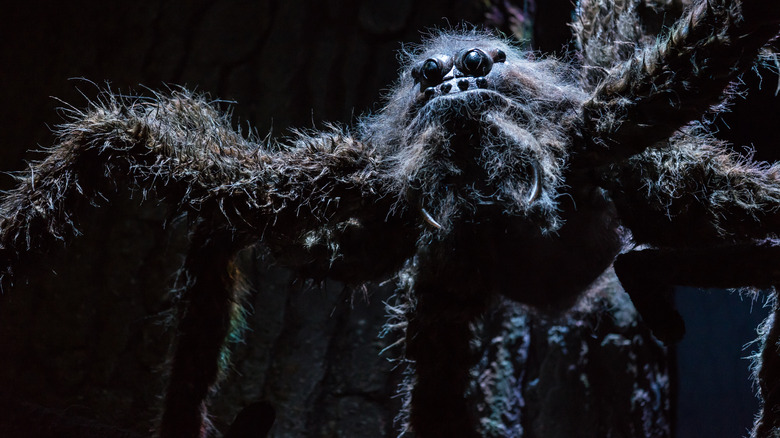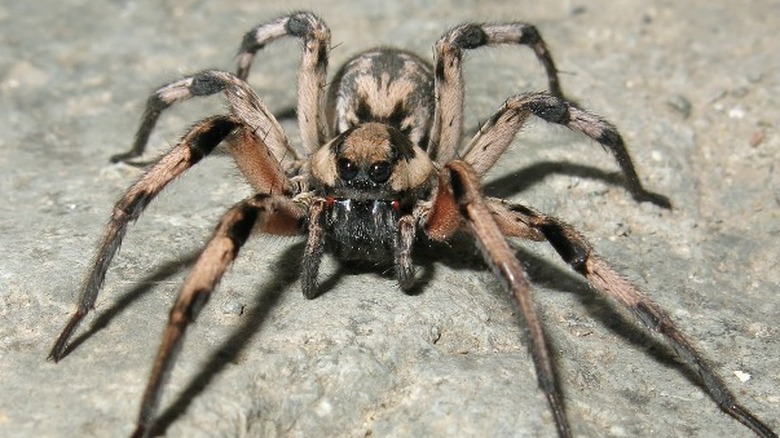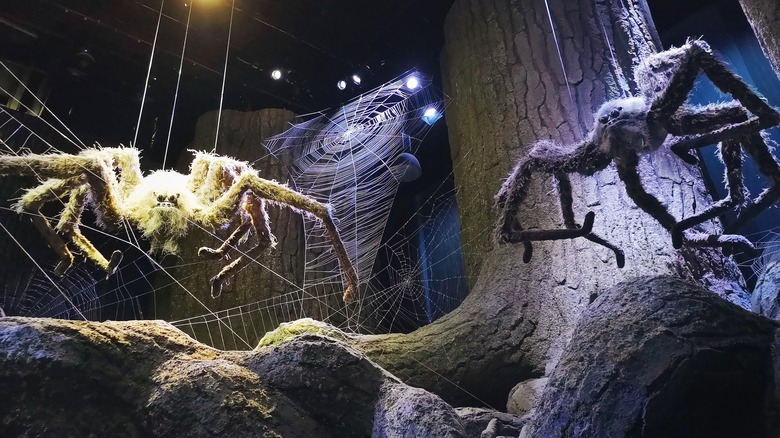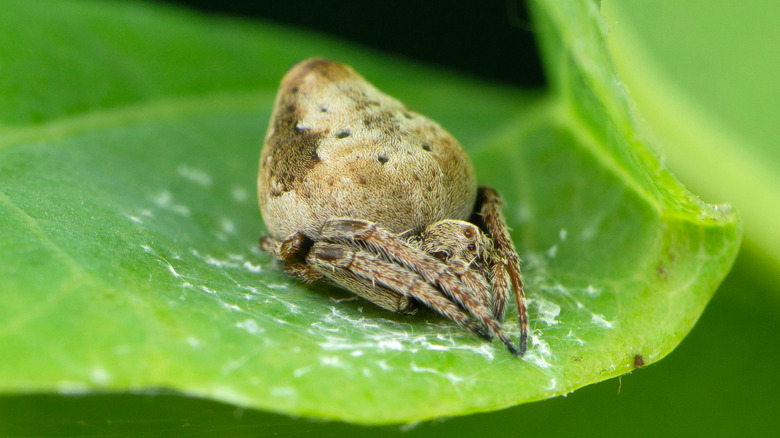The Real-Life Spider Named After One Of Hagrid's Pets From Harry Potter
Who says science and art have to be at odds? When the designers for the film "Harry Potter and the Chamber of Secrets" — based on the second installment of the bestselling "Harry Potter" book series by J.K. Rowling — went to create the animatronic puppet representing the giant spider Aragog, they based their work on the real-life wolf spider, according to Live Science. Fifteen years later, a team of researchers discovered a new species of wolf spider in the mountains of southeastern Iran. And they noted that she looked an awful lot like the puppet of the fictional monster. So much so, in fact, that they decided to name the new species Lycosa aragogi in his honor, according to the study published in Zootaxa.
"I personally grew up loving Harry Potter's books and movies," study co-author and University of Tehran researcher Alireza Zamani told CNN at the time. "Aragog was my favorite 'Fantastic Beast'! We thought it might be a good idea and celebration of this franchise to name the species after the giant, infamous arachnid."
A new wolf spider
It's fitting that the wolf spider was the inspiration for the giant human-hunting spider of "Harry Potter" fame. Wolf spiders actually get their name from the canine predator of the same name because of their similar hunting strategies, explains National Geographic. Instead of spinning webs, the spiders run and jump on their meals, then inject them with venom or pound them to death. While this might sound terrifying, in real life these spiders are only 0.24 to 1.2 inches.
There are more than 2,400 species of wolf spider, according to the Zootaxa study. The 2017 discovery was actually made by accident, per CNN. The University of Tehran-based research team was looking for butterflies. However, as reported by Live Science, on April 26, 2016, they found a strange female spider instead.
They determined it was a separate species because the female genitalia was different from other species of wolf spiders (via CNN). The spider was 1 inch long and 2 inches wide, with eight eyes and a hairy body. That hair made two black and three white stripes on the spider's upper body, per Live Science.
Aragog and Lycosa aragogi
There are more similarities between the fictional Aragog and the real Lycosa aragogi than just their appearance. In "Harry Potter," Aragog was a type of giant spider known as an Acromantula and was a pet of Hogwarts groundskeeper Rubeus Hagrid when he was still a student, according to the Harry Potter Lexicon. Eventually, Hagrid released Aragog into the Forbidden Forest, where he had a colony of babies with his wife Mosag. Study co-author Alireza Zamani told CNN that her discovered spider took after Aragog in both her hunting prowess and her maternal instincts.
Unlike Aragog and his offspring, Lycosa aragogi isn't a threat to humans and mostly hunts crickets and other bugs. She also carries both her egg sac and her newly-hatched offspring, despite the fact that she can have more than 100 babies. This nurturing behavior matches Aragog's love for his children. "[He] loved his colony of 'Acromantulas' [a fictional species of spider] so much he wouldn't stop them from devouring Harry Potter and Ron Weasley," Zamani told Live Science. This was a sign of paternal care on the part of Aragog because Harry and Ron were friends of his beloved former owner Hagrid, CNN explained.
Literary nomenclature
Lycosa aragogi isn't the only newly discovered animal species to be named for a "Harry Potter" character, or even the first spider. In 2016, researchers in India discovered a new species of spider that resembled the Sorting Hat in the series originally owned by Hogwarts founder Godric Gryffindor, as reported by the Times of India. The scientists, therefore, named the spider Eriovixia gryffindori. The hat shape is actually a form of camouflage that allows the spider to disguise itself as a leaf, researcher Javed Ahmed explained, but the shape immediately made him think of the books he had loved reading as a child.
However, fans of rival Hogwarts founder Salazar Slytherin shouldn't feel left out. He lent his name to a pit viper discovered in 2020, also in India, according to an article published in Zoosystematics and Evolution. The researchers named the new viper Trimeresurus salazar in honor of the character's ability to speak with snakes. Alireza Zamani told CNN that naming new species after famous fictional characters can help draw attention to these discoveries and boost the image of stigmatized animals like spiders. "I consider public awareness and education one of my most important goals," she said.



